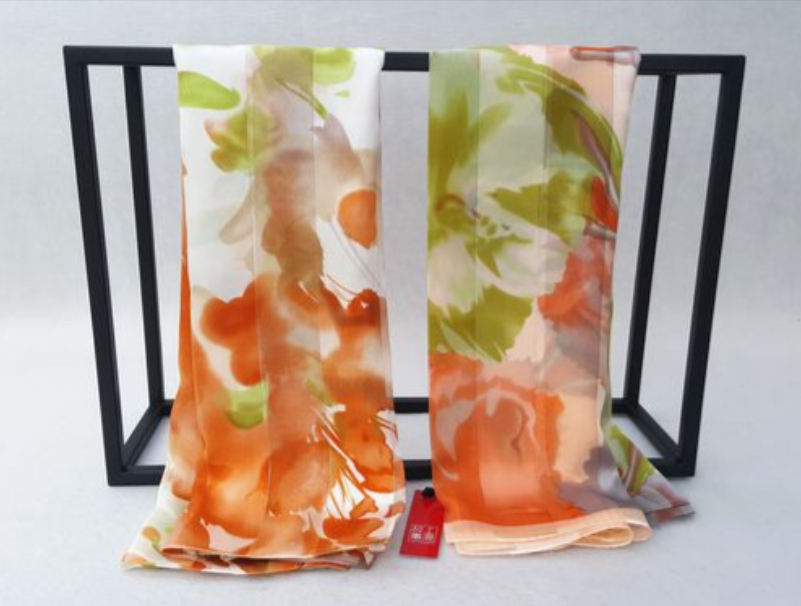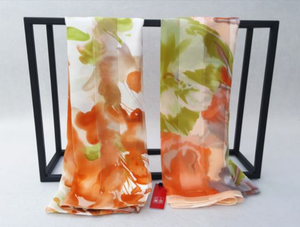
Silk Scarf Inspection Method and Standard Guidelines Inspection and Audit Services for Factory Verification
Silk scarves, as high-end clothing accessories, their quality directly affects the product value and consumer experience. The quality inspection of silk scarves is a systematic project, covering the entire process from raw material procurement to finished product delivery. This article will deeply analyze the factory inspection and quality inspection procedures, key quality control points, and testing standards of silk scarves, providing comprehensive reference guidelines for purchasers, quality inspectors, and production enterprises.
I. Basic Knowledge of Silk Scarves and Preparations Before Inspection
(1) Characteristics and Classification of Silk Scarves
Silk scarves are clothing accessories made from natural silk fibers such as mulberry silk and oak silk. They have features such as soft luster, smooth texture, and good moisture absorption and ventilation. According to the manufacturing process, they can be classified into types such as printed, jacquard, and embroidered. According to the shape, they can be divided into rectangular, square, and triangular forms.
(2) Preparations before Inspection
Technical document review: Check product specifications, silk raw material inspection reports, and dyeing process records
Verification standard confirmation: Clearly define the applicable national standards (GB/T series, FZ/T series) and the customer's specific requirements
Calibration of testing equipment: Ensure that the color fastness rating box, digital fabric thickness gauge, electronic scale, and other equipment are within the calibration validity period.
Sampling plan determination: Based on the batch size, the sampling quantity and acceptance criteria are determined in accordance with GB/T 2828.1
II. Key Points for Factory Audit of Silk Scarves
(1) Quality Management System Audit
Check whether the factory has established a complete quality management system (ISO9001 certification)
Review the supplier management procedures, especially the evaluation records of key raw material suppliers such as silk materials, dyes, and accessories.
Review the production process control documents and their implementation status, with a particular focus on key procedures such as refining, dyeing, printing, and finishing.
Evaluate the effectiveness of the control procedures for non-conforming products and the corrective and preventive measures.
(2) Key points of on-site production inspection
Raw material storage management: Inspection of the storage environment for silk raw materials, as well as measures for temperature and humidity control
Pre-treatment workshop: Inspect the water quality of the refining process and the usage records of additives.
Dyeing Workshop: Evaluation of dyeing process parameter control and dye batch management
Printing Workshop: Check the accuracy of pattern alignment, and record the color paste formulation.
Post-organization workshop: Evaluation of the use of organizing agents and control of setting temperature
Finished Product Inspection Area: Verify the implementation of inspection standards and record the completeness.
III. Quality Inspection Standards for Silk Scarves
(1) Fiber Composition Analysis
Quantitative Chemical Analysis:
Follow the standards of GB/T 2910 and GB/T 2911.
Determination of fiber content for two-component, three-component and four-component blended products
The silk/sheep's wool blend is tested according to FZ/T 01048 instead.
Fiber content label:
Compliant with FZ/T 01053 regulations
The deviation does not exceed the allowable range specified by the standard.
(2) Color Fastness Performance Test
Abrasion Resistance Color Fastness:
Test in accordance with the GB/T 3920 standard
Both dry rubbing and wet rubbing must reach level 3 or above.
Wash fastness to color:
Test in accordance with the standards of GB/T 3921.1 and GB/T 3921.3
Color changes and color bleeding must all reach level 3 or above.
Resistance to color fading under perspiration:
Test in accordance with the GB/T 3922 standard
Both the acid sweat test and the alkaline sweat test must meet the standards.
Lightfastness to light:
Test in accordance with the GB/T 8427-1998 standard
Achieve level 3 or above
(III) Physical Performance Testing
Dimensional Stability:
Tested in accordance with the standards of GB/T 8628, GB/T 8629-2001, and GB/T 8630.
The size change rate after washing and drying meets the standard requirements.
Breaking strength:
Both the longitudinal and transverse directions must meet the standard requirements.
The specific indicators are determined according to the product specifications.
Degree of fissure:
Meet the requirements stipulated by the standards
IV. Appearance Quality Inspection Standards
(1) Specification and Dimension Inspection
Dimension Deviation:
The length and width deviations meet the standard requirements.
The diagonal deviation is within the allowable range.
Vertical skew measurement:
Test in accordance with the GB/T 14801 standard
The degree of skew is in accordance with the standard requirements.
(2) Surface Quality Inspection
Color Uniformity:
Colorless flowers, color difference phenomenon
All products in the batch have the same color.
Printing quality:
The flower pattern is clear and there is no color bleeding.
The alignment is accurate and there is no misalignment.
Sewing quality:
The stitches are uniform and there are no skipped stitches.
The edges are smooth and there are no frayed edges.
(3) Defect Inspection
Raw material defects:
No rough fibers, tightly arranged fibers
No holes, no broken threads
Weaving defects:
Weaving without missing threads or weft lines
No flower-like patterns, no spider webs
Printing and dyeing defects:
No pigmentation, even tone
No missing printing.
V. Safety Performance Inspection
(1) Basic Safety Technical Requirements
Formaldehyde Content:
Complies with the requirements of GB18401 standard
Product category A ≤ 20mg/kg
pH value:
Complies with the requirements of GB18401 standard
Within the range of 4.0 to 8.5
Odor:
No musty smell, no gasoline smell, etc.
Decomposable carcinogenic aromatic amine dyes:
Not detectable
(2) Ecological Security Requirements
Heavy metal content:
Compliant with the relevant standards requirements
Pesticide residues:
Compliant with the relevant standards requirements
VI. Inspection Rules and Quality Determination
(1) Sampling Plan
Internal quality sampling:
Random sampling by batch
At least 3 samples should be taken from each batch.
Appearance quality sampling:
In accordance with the GB/T 2828.1 standard
General Inspection Level II
(2) Defect Classification
Serious Defects:
Insufficient safety performance
Major functional defect
Minor Defects:
Appearance defects
Secondary functional defect
(III) Quality Grade Evaluation
Premium Grade Products:
All indicators have met the standard requirements.
First-class product:
The main indicators have met the standard requirements.
Qualified Product:
The basic indicators have met the standard requirements.
VII. Packaging, Labeling and Storage Requirements
(1) Packaging Inspection
Inner Packaging:
The packaging materials meet environmental protection requirements.
The product is flat and free of wrinkles.
Outer packaging:
The strength of the cardboard box is sufficient.
The identification is clear and accurate.
(2) Use of Labels
Product Labels:
Compliant with the requirements of GB5296.4
The content is complete and accurate.
Nursing Identification:
Clear and understandable
Conform to the actual characteristics
(III) Storage and Transportation
Storage environment:
Dry and well-ventilated
Avoid direct sunlight.
Transportation Requirements:
Waterproof and pressure-resistant
Avoid storing together with sharp objects.
VIII. Conclusion
The quality inspection of silk scarves is a multi-dimensional systematic project that involves raw material quality, production processes, safety performance, and usage characteristics. The inspection personnel of the factory and the warehouse need to have a comprehensive understanding of product standards, inspection methods, and common quality issues in order to effectively control product quality. The manufacturing enterprises should establish a complete quality management system, especially strengthening control in aspects such as raw material quality control, stable dyeing processes, and finished product inspection, to ensure that the products meet national standards and customer requirements.
分享这个商品

Silk Scarf Inspection Method and Standard Guidelines Inspection and Au
Silk scarves, as high-end accessories for clothing, their quality directly affects the product value and the consumer experience.
